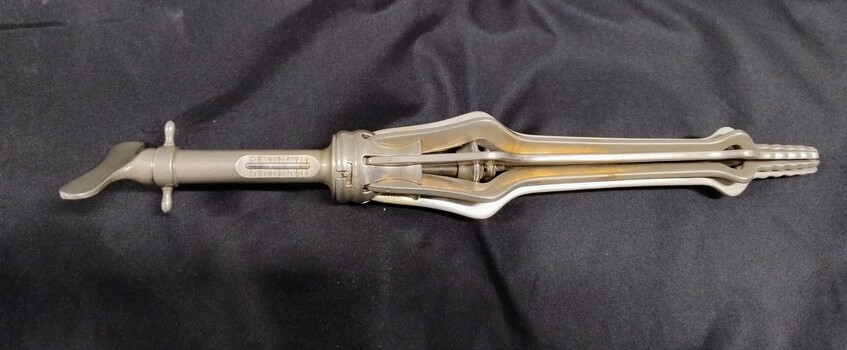Historical information
Alfred Dührssen (23 March 1862 – 11 October 1933) was a German gynecologist and obstetrician born in Heide, Schleswig-Holstein, at the time part of Denmark.
He studied medicine at the University of Marburg, as well as the Kaiser-Wilhelm-Akademie für das militärärztliche Bildungswesen (Kaiser-Wilhelm-Academy for Military Physicians). In 1886, he became an obstetrical assistant to Adolf Gusserow (1836-1906) in Berlin, and in 1888 he began work as a lecturer at the University of Berlin. In 1892 he opened a private clinic for obstetrics and gynecological diseases.
Dührssen was a prominent figure in modern German gynecology, being remembered for his pioneer work in surgical practices such as vaginal Caesarean section (vaginalen Kaiserschnitt). He was an advocate of institutional births for all pregnancies, and proposed that pregnant women undergo screening processes to uncover possible difficulties prior to giving birth.
(Wikipedia)
Physical description
Metal uterine dilator consisting of a handle, a short shaft, and eight prongs. The prongs each have a bump/curve in the prong towards the top, to allow them to bend around the shaft of the instrument and meet at their tips. There is a second 'bump' in the prongs just before the tips. The tip of each prong has five ridges to assist with grip. The handle of the device is a flat, rounded handle, which is turned to open the prongs and set them at various degrees of diameter. There is a gauge on the shaft of the instrument which ranges from 0-12, showing the current setting of the instrument. There is also a pin and T-shaped slot arrangement located just above the start of the prongs, which has been engraved '8' on the left hand side, and '1' on the right hand side. Each prong is also engraved with a number at the base of the prong, reading '1' to '8'.






